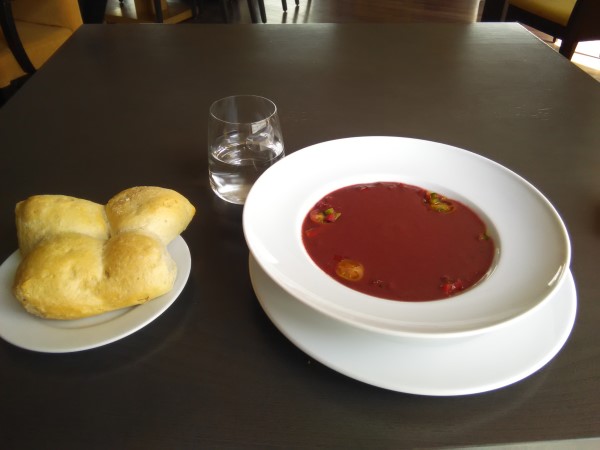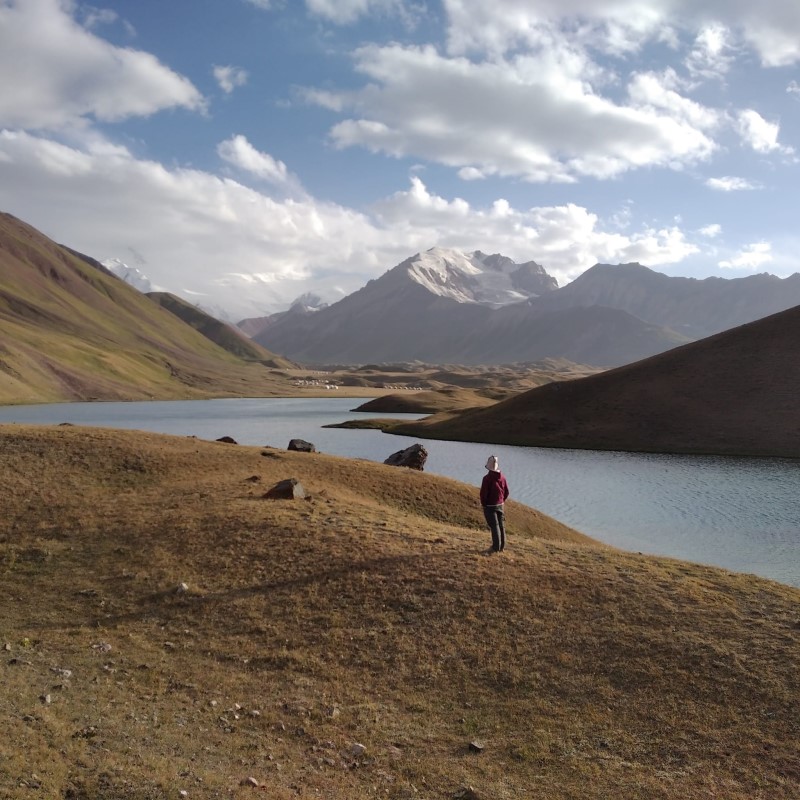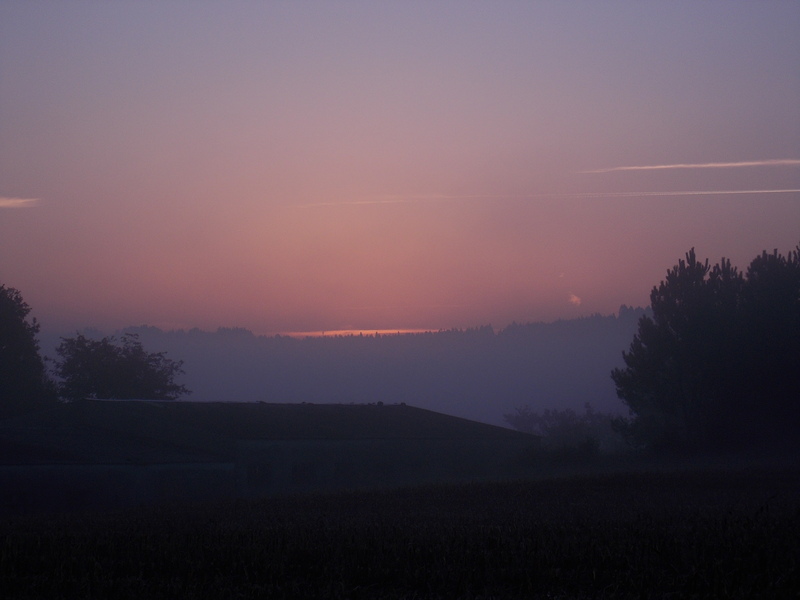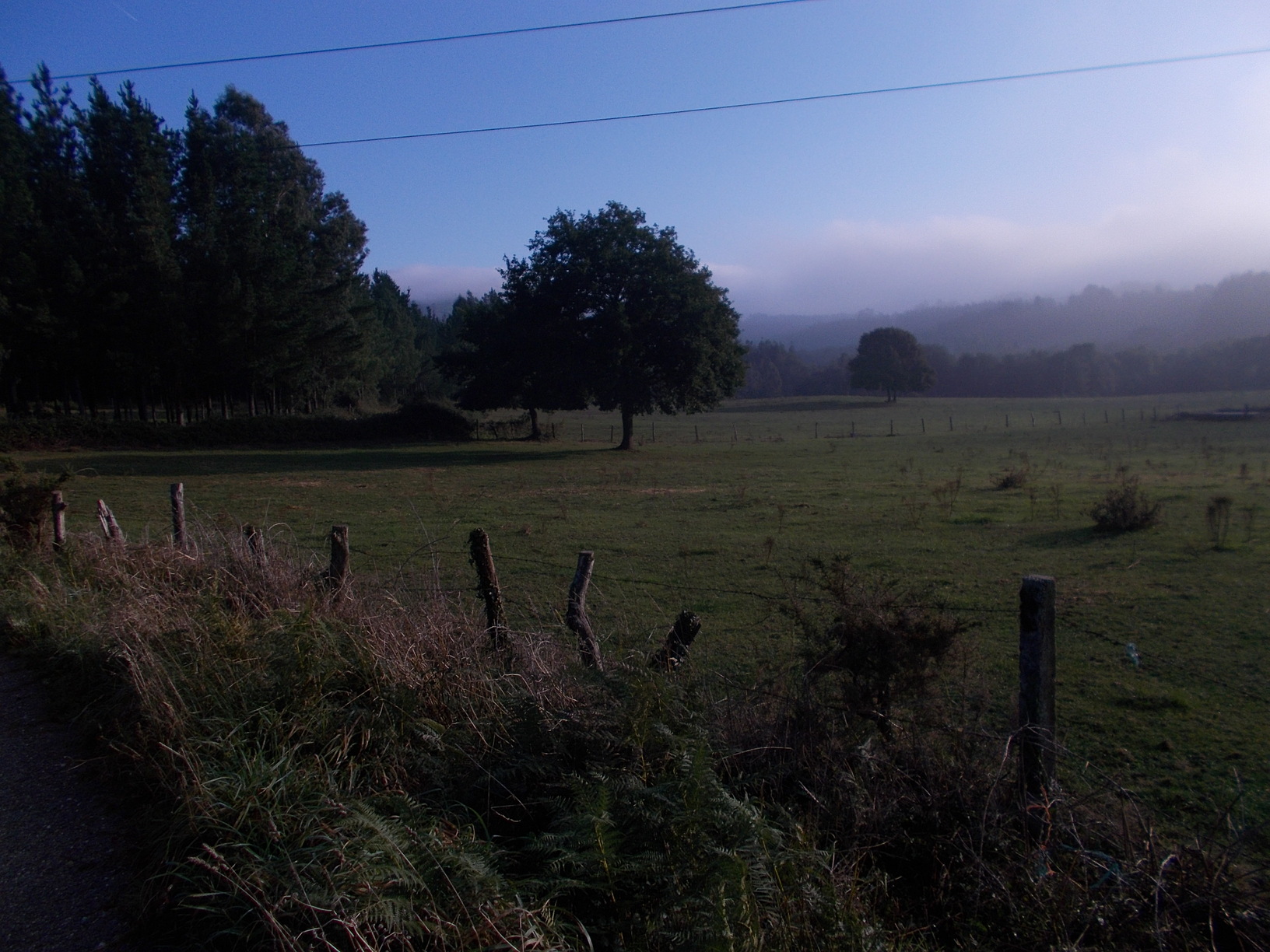
Basic Details
- Starting point: Lugo, the provincial capital of roughly 100,000 inhabitants, a city with a beautiful old town considered by many nicer than Santiago de Compostela. It has one pilgrim albergue and plenty of other accommodation options for pilgrims and tourists. It is roughly 100 kilometers away from SdC, and hence the starting point for the shortest possible Camino Primitivo (one has to walk at least 100 kilometers to get the certificate of having completed the pilgrimage of Saint James).
- Ending point: A small Galician hamlet of Ferreira, with only 60 inhabitants, but three pilgrim albergues, bar, restaurant, etc, simply one of those small Galician hamlets that live almost entirely from the Camino. It is also “famous” for a small bridge of Roman origin (right on the Camino).
- Availability of alternative routes: Yes, surprisingly for many pilgrims, there are actually three possible roads today, all of them sharing part of the Camino, and then going their own way. Before we dive into the differences, I want to stress that none of them is extreme, none of them adds too many extra kilometers, and none of them bring some super exciting landscapes or anything of that sort... But since they are here, I want to at least briefly elaborate on each of them:
- The official Camino route, mapped here. Marked as route for cyclists too, this alternative avoids virtually any trails, and follows paved roads only. It is marginally shorter than the other two variants, and little more steep towards the end (more on the elevation charts).
- The south variant, mapped here. For a big part identical with the official Camino, it splits for the last third only, and follows a flatter terrain, and a bit more rural countryside than the official Camino. It also adds a little bit of unpaved terrain (+2 kilometers when compared to the official camino), and 2.5 extra km of distance. However, you won’t encounter here any special natural or historic landmarks for which it would make sense to take this alternative in particular.
- The variant over the ancient Roman road “Via Romana”, mapped here. Right from Lugo, you can follow the Roman route, called Via Romana XIX, which is the name of the route (since it was the 19th such route Romans built in their empire. and the most important one on the Iberian Peninsula) and has nothing to do with its origin or date of construction. This variant adds some 3 extra kilometers of walk, at the beginning a lot of traffic (since nowadays a provincial avenue of LU-232 coincides with it as it leaves the city of Lugo, and this route is busy in the mornings), and later on a bit more variety. It isn’t a bad way, and you will walk along some archeological sites, and on some sections you can still see the original stones this route was built from, but as you can imagine centuries has taken it’s toll on everything, and you cannot expect some breathtaking sights. Nevertheless, it is worth taking for someone into history, especially the second part of it. It is 2.5 kilometers longer than the official Camino route.
- Distance: Official Camino route: 26.5 km (download GPS here). Southern variant: 29 km (download GPS here). Roman route variant: 29km (download GPS here).
- Elevation difference: Official Camino route: + 630m, -660m. Southern variant: +600m, -630m. Roman route variant: +655m, -685m.
- Difficulty score: 3/5, for all variants.
- Beauty score: 2/5 for all variants, the Roman Route variant has some nicer sections (but not for a long time, and is close to 3/5 beauty score).
- Terrain/asphalt: Official Camino route: 10%/90%. Southern variant: 15%/85%. Roman route variant: 15%/85%.
- Next stage: Camino Primitivo, Stage no. 10. Ferreira – Melide.
- Previous stage: Camino Primitivo, stage no. 8, O Cadavo – Lugo.
Elevation profiles for the routes
 – Official Camino route, as you can see, except of the initial drop and climb you stay all day between 450 and 600 meters of elevation, The route is often flat, or with a very moderate gradient of climb/descent of 2%-5%. There is one sharp descent of over 100 vertical meters on 1 kilometer and than one climb of 70 meters on 1 kilometer towards the end, but that’s about it. Not a hard one, but not an easy one either.
– Official Camino route, as you can see, except of the initial drop and climb you stay all day between 450 and 600 meters of elevation, The route is often flat, or with a very moderate gradient of climb/descent of 2%-5%. There is one sharp descent of over 100 vertical meters on 1 kilometer and than one climb of 70 meters on 1 kilometer towards the end, but that’s about it. Not a hard one, but not an easy one either.
 – Roman route variant (Via Romana XIX), in terms of elevation profile it is pretty similar to the official Camino.
– Roman route variant (Via Romana XIX), in terms of elevation profile it is pretty similar to the official Camino.
 – The southern variant, in contrary to the other two alternatives for today, it avoids the sharp descent and climb towards the end of the stage. It is the flatter of the three alternatives, and probably the right way to take should you have some problems with knees or something similar (sharp descents aren’t good for painful knees :)).
– The southern variant, in contrary to the other two alternatives for today, it avoids the sharp descent and climb towards the end of the stage. It is the flatter of the three alternatives, and probably the right way to take should you have some problems with knees or something similar (sharp descents aren’t good for painful knees :)).
Advanced info about the stage
- Trail marking: All three alternatives of today’s walk are signposted. The camino ways (the official and alternative southern variant) are signposted with yellow arrows and stone markers, whereas the Roman way is, on some sections sparsely, signposted with plates on the ground, like this one. However, if you decide to follow one of the alternative routes (the southern alternative or the Roman way alternative), I suggest you to either check the map regularly or download one of our GPS files (you will find them a few paragraphs above).
- Natural places worth seeing: Probably the only thing worth a mention is a natural reserve (of humid biotopes with plenty of interesting bird species), called “Reserva da Biosfera Terras do Mino“, in Galego, the local language. The funny thing is that you spend almost entire day walking in this zone belonging to UNESCO protected zones (Natura 2000), but, as it is almost always the case with these reserves meant primarily for bird and diversity of ecosystems protection, there are only some spots within the reserve that are particularly nice or interesting, and Camino de Santiago doesn’t pass along (or even close to) any of these spots. Having said that, you may be lucky to spot some interesting birds, so if you happen to be into bird watching, keep your eyes open ;).
- Historical, architectural, and culinary places worth seeing:
- Ponte Vella de Lugo, very well preserved Roman bridge, right on the Camino, when you exit the city of Lugo. Exact location on Google maps here. Good for taking pictures directly from the bridge, or of the bridge a bit later on.
- Several small churches of typical architecture for this zone of Galicia, often next to the cemetery, or directly forming a part of it :). All of them are right on the Camino, and probably none of them deserves a special mention or pointing out, but if you’re into churches (the exterior architecture, since they are all locked in this zone), you will find plenty to look at on today’s stage,
- The Roman way “Via Romana XIX” with some nice sections that breath history. Check the “alternative route” info at the beginning of this post for GPS and instructions on how to follow this ancient way. Along the roman route you will pass by a few archeological sites, but there’s not much to see there, except of a few info panels (not in English) that describe what the place was in the past and what artifacts the archeologists found there.
- Camping/bivouac options on this stage: Let me start with something atypical first, a new camping concept called GLAMPING, which is an abbreviation for “glamorous camping”. As you an likely imagine, you won’t stay in tents or camper vans… This camping place just outside of Lugo, exactly here, 2.5 kilometers away from the Camino, offers only luxury cabins in the forest, with Jacuzzi and such stuff :). It isn’t really a camping, or is it? Anyway, it is the only organized camping place in the zone, if we decide to call it as such :). The prices start at 150 euros/night for one of the cabins…. Back to wild camping, right? For wild camping on this stage, is is bit more tricky, due to flatter terrain, private property, cows everywhere… On the other hand, once you get closer to Ferreira the zone is sparsely populated, and you may have some luck in the forested areas nearby. Just take any of the trails or roads that isn’t fences or marked a private property, looking for some secluded and at least partially protected spot. For example somewhere around here. If you’re into bivouacking under the porches of local churches (which is my favorite way of sleeping outside on the Camino), the bad news is that there aren’t any churches with covered porch in the zone close to Ferreira. Such churches just aren’t typical for the zone… churches here have a different architecture.
- Dog friendly score: 2/5. Things getting only worse for dogs, with dull terrain, 90% of paved road walking (very hard on the feet of your beloved dog in warm weather), and the tricky situation with local water fountains (see the section “few tips at the end for more information”). The only positive thing is that one pilgrim hostel in the zone accepts dogs, and it is this one: Albergue A Nave de Ferreira.
- Special remarks: Tomorrow you will already sleep in a place that is on Camino Frances, Melide (Camino Primitivo connects with Frances just in the center of Melide). This means that you better check on the albergues (or other accommodation options) in Melide tonight, making sure you will have a bed. The thing is that regardless of how busy (or empty) Primitivo is when you’re walking it, things can always be very busy on Camino Frances, the most popular Camino route by some margin, and for your last couple of days on the Camino Primitivo it is better making a reservation one day in advance.
My picks for accommodation on this stage
- Albergue de peregrinos de San Román da Retorta, San Roman de Retorta, km 20. Location on Google maps here (they did not put the albergue on Google maps, so there are no reviews there). 12 beds in 2 rooms, 10 euro/night, showers and toilets in a separate building. Very calm and quiet place where one can typically get a bed even in the highest season on Camino Primitivo. Well-equipped kitchen, and you can get dinner in a private albergue just next door… Pretty good reviews across all pilgrim platforms, opens 1pm, doesn’t accept reservations.
- Pensión O Lar do Alecrín, O Burgo Negral, km 24. Location and reviews on Google maps here. Excellent option for a bit of privacy, and a bit away from the crowds. Very quiet and clean place with nice hosts, menu for 12 euros, nice sitting spaces outside of the house, great views. Starts from 50 euro/room, which isn’t too bad for couples on the pilgrimage. Check-in from 1pm to 5pm, recommended way of making a reservation: comfortably on Booking.com, or by WhatsApp on one of the following two numbers: +34 982 150 231, +34 697 920 353.
- Refugio Punto de Encuentro, O Ferreira, km 27.5. Location and reviews on Google maps here. A brand new donation based albergue on Camino Primitivo (opened summer 2025), with just 5 beds in one room. Run by a musician. Check-in from noon, open all year long, doesn’t accept reservations. Albergues in Ferreira doesn’t have the best reputation, so it is nice seeing this project come up, and let’s see how it goes…
- Albergue A Nave de Ferreira, O Ferreira, km 27.5. While none of the albergues in Ferreira is particularly good, if you have to stay in one, I’d pick this one, for the beautiful garden it has, and for the vegan menu option for dinner :). Location and reviews on Google maps here. 26 beds in 6 dorms, plus a few private rooms. 18 euro/night, dinner is extra 12 euro, breakfast another 6 euro… Basically you pay extra for everything–bed sheets, washing, etc :). But the treatment isn’t too bad and from the places in Ferreira, this is probably the best one. Recommended way of making a reservation: Booking.com, here.
Pictures from the stage
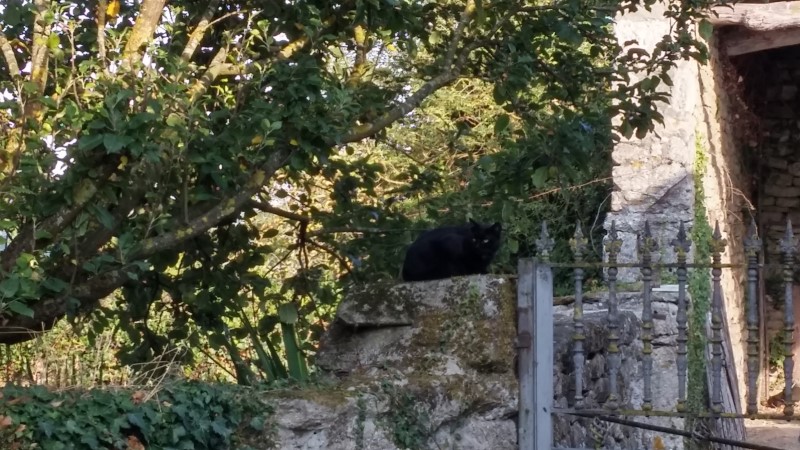 – Galicia, with its many interesting walls, gates, and the playful interaction of humans and nature…
– Galicia, with its many interesting walls, gates, and the playful interaction of humans and nature…
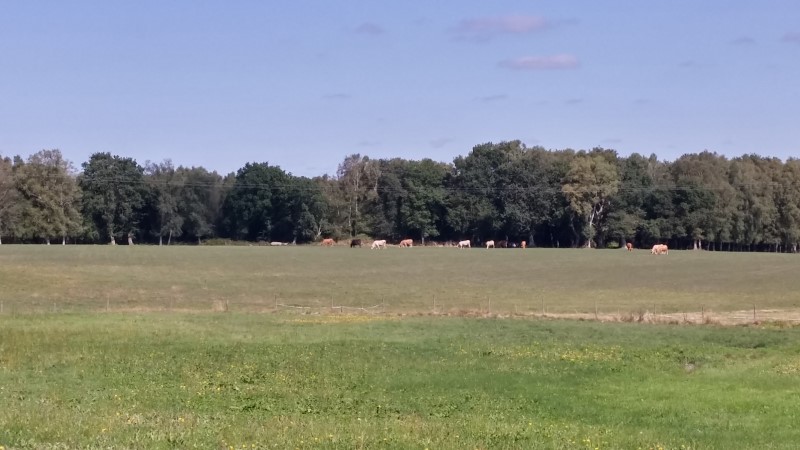 – This picture sorts of sums up what you will see on today’s stage :). Lot of open pastures, lot of cows in the distance, some nice trees, a calm and peaceful vibe with a smell of cow shit never too far way…
– This picture sorts of sums up what you will see on today’s stage :). Lot of open pastures, lot of cows in the distance, some nice trees, a calm and peaceful vibe with a smell of cow shit never too far way…
 – Tree tunnels like this one are typical for Galicia, though you won’t walk through so many on this stage. However, they always provide some shade and a nice refuge from the hot Spanish sun..
– Tree tunnels like this one are typical for Galicia, though you won’t walk through so many on this stage. However, they always provide some shade and a nice refuge from the hot Spanish sun..
Few tips at the end
- I have some bad experience with drinking water from fountains in this part of Galicia (stomach problems, and I was not alone). I do not know if it has something to do with the number of cows around everywhere, or if the reason is different, but when we compare them with fountains in more elevated zones of Galicia, or with fountains in the province of Asturias (where Camino Primitivo starts), the water quality here is definitely much worse. Unless you consult the locals and they tell you that the water in a fountain is great and people from the village drink it, I’d avoid drinking from the water fountains in this zone. The last thing you want to is getting diarrhea just a few days before reaching Santiago.
Next/Previous Stage
- Next stage: Camino Primitivo, Stage no. 10. Ferreira – Melide.
- Previous stage: Camino Primitivo, stage no. 8, O Cadavo – Lugo.



![Ultralight Packing List for Camino de Santiago [2025 Edition]](https://caminolovers.com/wp-content/uploads/2022/03/altra-shoes-640-x-480.jpg)
